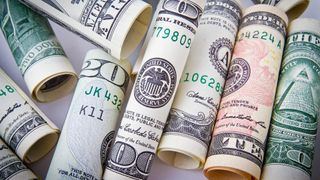Americans who are still waiting for their coronavirus stimulus check can now use a new method to track when the payment might be about to land in their mailboxes.
While the latest IRS data reveals that more than 152 million stimulus payments have so far been delivered, millions more payments are either yet to be sent or will be in transit. The first wave of stimulus payments - which can amount to up to $1,200 for qualifying individuals - began to arrive directly into bank accounts in mid-April.
However, with the deadline for supplying bank details to receive the payments by direct transfer having passed on May 13, anyone who has not yet received their money will likely now receive it in the mail. This will either be in the form of paper check or, as the IRS announced last week, a prepaid debit card. Around four million debit cards are being sent as part of efforts to get money to people fast but in a secure and easy-to-use way.
Of course, this still means that people will be waiting on the mailman before they can get their hands on the money that many might desperately need. Research from YouGov recently found that 30% of people had used their stimulus payment to pay bills, 10% had bought essentials such as food, and 8% used the money to pay off debt.
For those having to juggle their finances, knowing when they will receive the stimulus payment could prove invaluable as part of their planning.
How to find out when your stimulus check will arrive
Your first port of call should be the IRS, where the online Get My Payment tool will let you check on your payment status. As long as you have provided a tax return, or non-filers have supplied the information that is required of them, then you should get a rough estimate of when your stimulus money will arrive.
Once you know that everything is in order at the IRS, however, you are still beholden to the U.S. Postal Service…but this is where the Informed Delivery service can come into play.

Set up by the U.S. Postal Service to allow people to track any mail - not just stimulus checks - Informed Delivery is free and will verify that the letter containing your payment is definitely on its way. The service makes use of the digital image that is created when letter-size mail passes through the automated mail sorting equipment used by the Postal Service. What the Informed Delivery program does is use this digitally captured information to notify you when each piece of mail is on the way.
How to sign up for the Postal Service Informed Delivery service
To get started, and see if the service is available to you, head to the Postal Service's Informed Delivery page, where you can sign up for free and set up an account. The service is generally available to residential and personal PO box addresses, but won’t work for some multi-unit buildings where each unit has not yet been identified by the Postal Service.
You will need to verify your identity and address, which can be done by phone, mail or in person at a Post Office, and it can take up to three business days to activate your account.
However, once you are up and running, you will be able to receive notifications on your smartphone, tablet or computer as to the mail that is on its way and when. There is an online dashboard you can access each day, or perhaps better, you will receive an email each morning, Monday through Saturday, if mail is scheduled to arrive, along with a grayscale image of the front of the letter.

What to do if you are still waiting for your stimulus payment
If you are expecting a coronavirus stimulus payment, but haven’t yet received it, head to the IRS website to make sure there is no outstanding information that you need to supply.
Payments are automatic for people who filed a tax return in 2018 or 2019, receive Social Security retirement, survivor or disability benefits (SSDI), Railroad Retirement benefits, as well as Supplemental Security Income (SSI) and Veterans Affairs beneficiaries who didn't file a tax return in the last two years. If you have a filing requirement and have not filed a tax return for 2018 or 2019, you must file a 2019 tax return to receive the payment.
However, there are also millions of people who do not typically file a tax return but who are still eligible to receive the payments. If you are among those who don't receive federal benefits and didn't have a filing obligation in 2018 or 2019, you should use the Non-Filer tool at IRS.gov to get yourself registered. If you haven’t done it yet, remember that people can continue to receive their payment throughout the year.
"Economic Impact Payments have continued going out at a rapid rate to Americans across the country," said IRS Commissioner Chuck Rettig. "We remind people to visit IRS.gov for the latest information, including answers to the most common questions we see surrounding the payments. We also continue to urge those who don't normally have a filing requirement, including those with little or no income, that they can quickly register for the payments on IRS.gov."
If you have already received your coronavirus payment, but it falls short of what you were expecting, there are a number of reasons why this could be the case. If you are struggling to cope financially, either because of a smaller than anticipated payment or due to wider money problems, there are a number of alternatives that might be able to help. The best debt consolidation companies could also prove useful in helping getting your finances back on track if debt is increasingly weighing on your mind.

